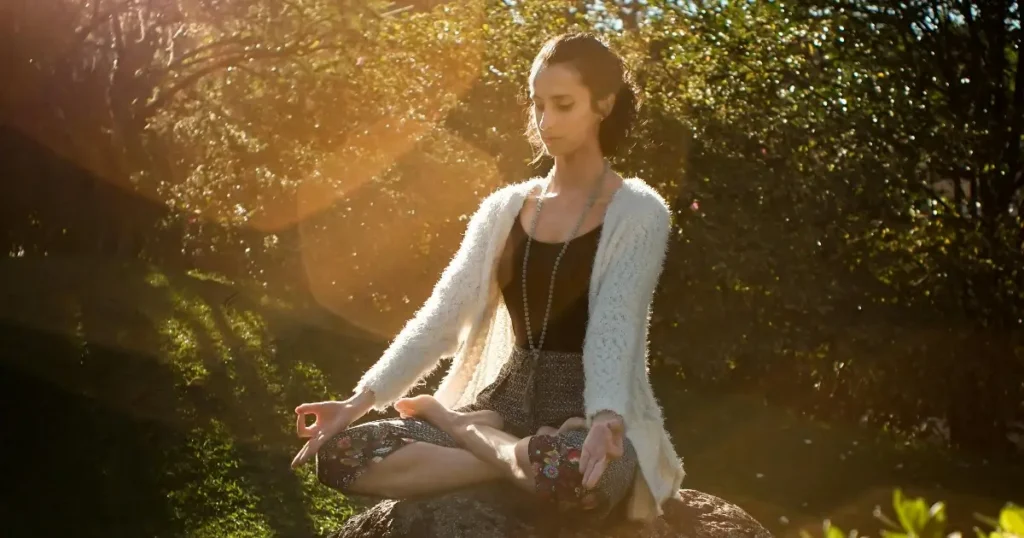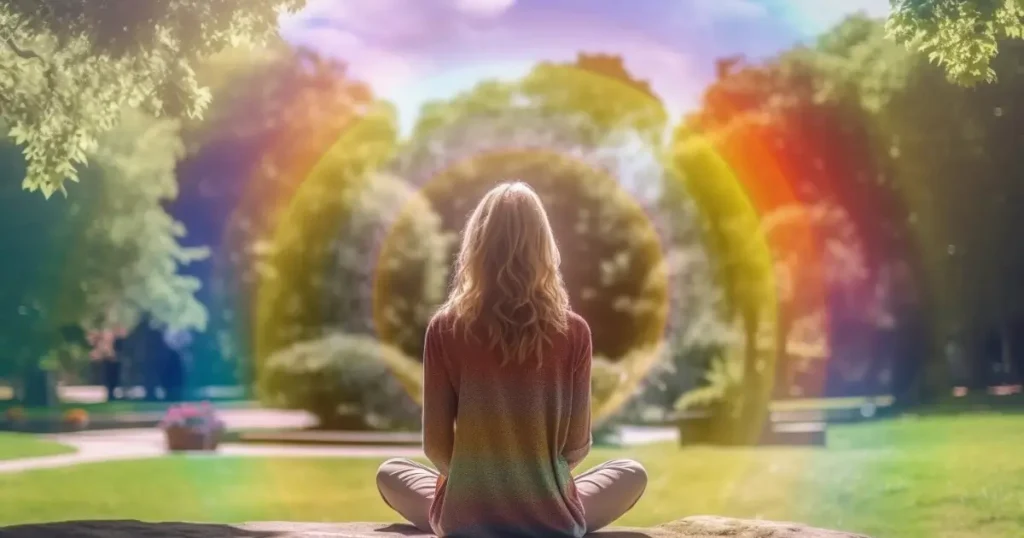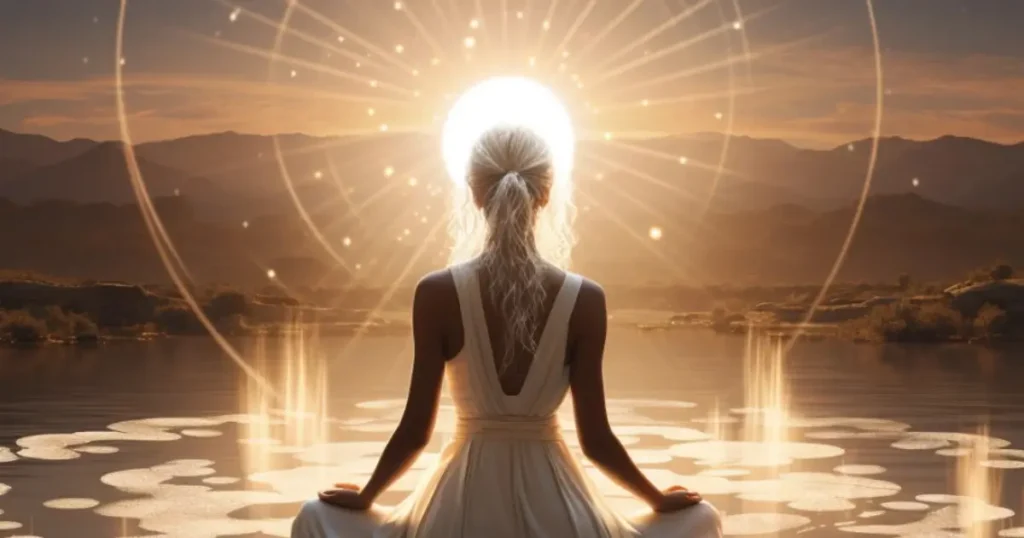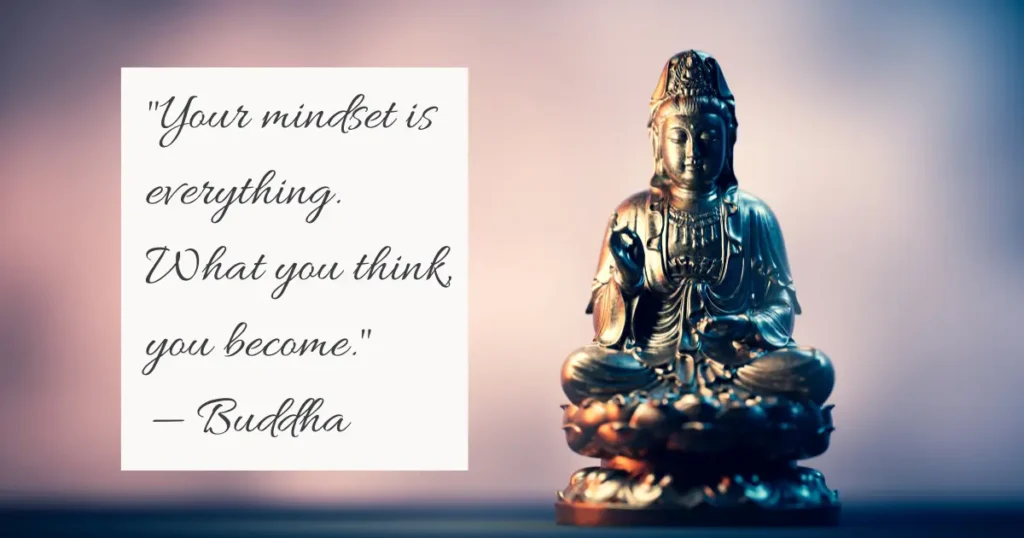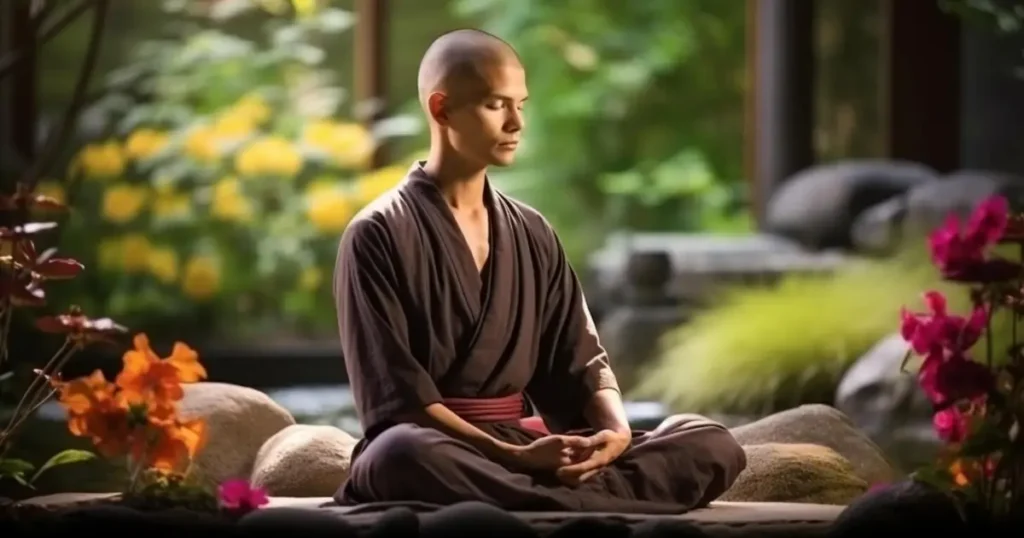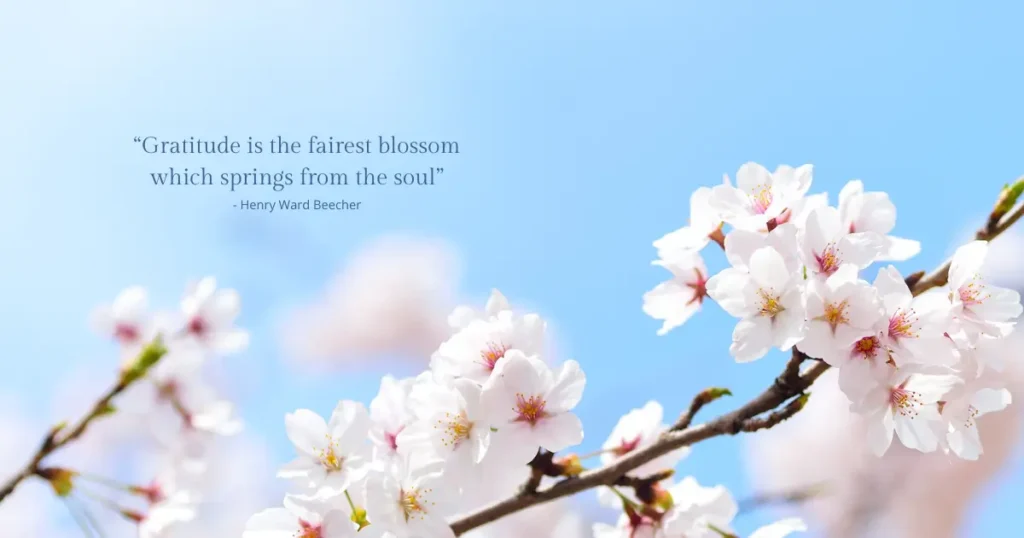The History & Origins of Meditation: Ancient to Modern Evolution
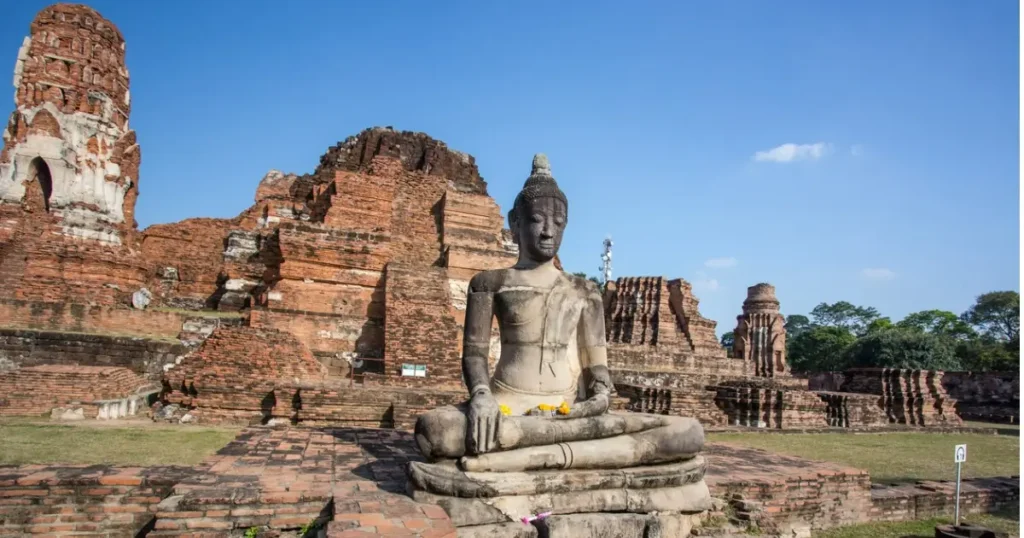
Meditation has a rich history spanning over 5,000 years, originating in cultures like ancient India, China, and Egypt. Initially tied to religious or spiritual traditions, its earliest documented forms appeared around 1500 BCE in Vedic texts in India.
In China, around 500 BCE, Taoist practices emphasized mindfulness and breathing exercises, while early Buddhist teachings around the same time focused on mindfulness and concentration through meditation.
These ancient practices serve as the bedrock for the diverse meditation techniques we see today, shaping civilizations in the past and still significantly impacting lives today.
Let’s discover how these timeless practices shaped civilizations and continue transforming lives today.
Meditation’s Journey Through Time

Meditation’s transformative path through history highlights its enduring significance in human culture and spirituality. From ancient rituals aimed at deepening connections and understanding, it has seamlessly integrated into the tapestry of various civilizations, adopting diverse forms and philosophies. Traveling through time and across landscapes, meditation has mirrored the spiritual and practical shifts of societies.
This venerable practice has linked different cultures, providing methods for introspection, peace, and enlightenment. Today, it extends beyond spiritual roots, embracing health and wellness sectors, and attracting those in search of mental clarity and emotional balance.
As we explore meditation’s historical evolution, from its foundational practices to its widespread adoption and modern-day relevance, we uncover a continuous narrative of humanity’s quest for inner tranquility and wisdom. This journey underscores meditation’s timeless appeal and its role in enhancing personal and collective well-being.
Roots of Ancient Meditation

Tracing back to 5,000 years ago, meditation manifested in various forms across different cultures, each adapting its own unique method. In the heart of ancient India, the essence of meditation was captured through practices that involved deep concentration, meticulous breath control, and vivid visualization, as immortalized in the Vedic texts.
Farther east, in China, Taoist philosophies advocated for a profound synchronicity with the natural world, achieved through specific breathing techniques and heightened awareness of the present moment. Similarly, in Egypt, evidence of meditative-like practices can be found in the intricate hieroglyphs, often linked to religious and ceremonial rites.
These cornerstone civilizations not only pioneered the practice of meditation but also established the fundamental techniques of seated meditation, controlled breathing, and thoughtful contemplation. This rich heritage marks the commencement of a global journey towards seeking inner wisdom, fostering a connection with the universe, and embracing the transformative power of meditation.
Meditation in Hinduism and Buddhism

Meditation evolved significantly within Hinduism and Buddhism in India, introducing diverse techniques aimed at enlightenment and self-realization. Hindu texts like the Upanishads emphasize meditation for understanding the self and the cosmos, aiming for liberation (moksha).
Buddhism, founded on the Buddha’s teachings, promotes mindfulness and insight meditation (Vipassana) to comprehend reality and achieve nirvana. This evolution not only enriched spiritual practices but also paved the way for meditation’s integration into various cultures, influencing global traditions.
The modern resurgence in meditation’s popularity highlights its timeless relevance for personal growth, stress reduction, and holistic well-being. Additionally, Zen Buddhism and Taoist practices from China further demonstrate meditation’s diverse applications, emphasizing being present and harmonizing with nature.
These teachings have cemented meditation as a foundational tool for navigating life’s challenges and fostering a deeper connection with oneself and the world.
From Ancient Roots to Global Practices

Originating in ancient India within Hinduism and Buddhism, meditation has journeyed across Asia, enriching traditions in China and Japan with practices like Vipassana and Zen Buddhism.
This expansion continued, influencing spiritual practices in the Middle East and Europe, including early Christian mysticism. The 20th century saw a surge in interest towards Eastern spirituality in the West, significantly widening meditation’s global footprint.
Today, it stands as a universal practice, embraced for personal development, mental health, and spiritual discovery worldwide. This evolution reflects meditation’s adaptability and enduring relevance, bridging diverse cultures and philosophies.
The practice now plays a key role in holistic health paradigms and stress management strategies, further underscoring its importance in modern society’s quest for well-being and mindfulness amidst the complexities of contemporary life.
Modern Meditation: From East to West and Beyond

Meditation’s journey into the modern era marked a significant renaissance as it permeated global cultures and religions. The 20th century highlighted its ascendancy in the West, propelled by prominent figures such as Maharishi Mahesh Yogi and Thich Nhat Hanh, who introduced Eastern meditation techniques to a broader audience.
Concurrently, scientific scrutiny into meditation unveiled its profound benefits on mental health and well-being, encouraging its integration into the mainstream. By the turn of the century, secular mindfulness practices gained momentum, finding their place in healthcare, educational settings, and corporate environments.
This evolution affirmed meditation’s role as an essential instrument for enhancing personal development, mitigating stress, and promoting holistic health. Its acceptance across various sectors underscores the universal appeal and adaptability of meditation, signifying its importance not just as a spiritual practice but as a vital component of modern wellness strategies.
Big Names and Books That Changed Meditation Forever
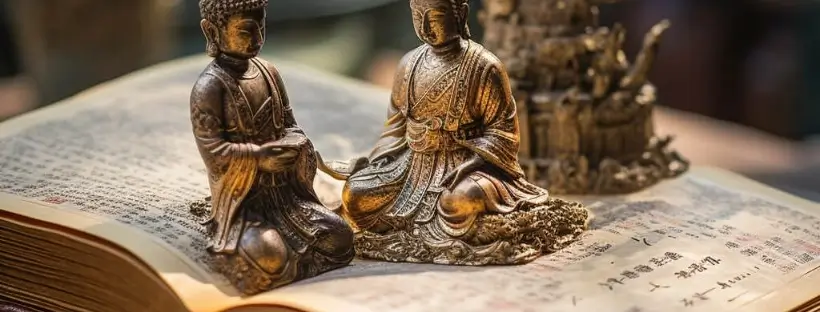
Let’s explore the world of meditation through the eyes of some remarkable authors whose contributions have significantly shaped its practice and broadened our understanding of its profound impact.
These authors, through their seminal works, provide a comprehensive guide to the art and science of meditation, spanning various traditions and philosophies.
Patanjali – “Yoga Sutras”
Patanjali’s “Yoga Sutras” stands as a monumental text in the realms of meditation and yoga, meticulously detailing the steps toward spiritual enlightenment with unparalleled precision and depth. Patanjali presents a methodical approach for cultivating a harmonious connection between mind, body, and spirit. This text delves into the ethical precepts of yoga, the significance of breath control, and the power of meditation to achieve a state of deep contemplation and unity with the universal self. Through its profound insights and practical guidance, Patanjali’s “Yoga Sutras” continues to inspire and illuminate the path for practitioners around the globe, serving as an essential manual for anyone on the journey of spiritual awakening.
Bodhidharma – The Zen Teaching of Bodhidharma
Bodhidharma’s “The Zen Teaching of Bodhidharma” lays the foundation for Zen Buddhism and its meditation practices, encapsulating the essence of mindfulness, presence, and the pursuit of a tranquil and insightful state of being. Bodhidharma, recognized as the first patriarch of Zen, articulates the importance of directly perceiving one’s true nature through meditation, beyond the confines of intellectual understanding. His teachings advocate for a straightforward approach to achieving enlightenment, emphasizing the significance of sitting meditation (zazen) and the cultivation of a mind that is alert and yet at peace. This seminal work paves the way for the Zen practices that are now embraced worldwide, offering a timeless perspective on the art of meditation.
“The Tibetan Book of the Dead”
“The Tibetan Book of the Dead” provides a profound exploration of the Tibetan Buddhist view on the cycles of life and death, highlighting meditation’s pivotal role in understanding and navigating these existential transitions. This sacred text, serving as both a guide for the dying and a manual for the living, offers detailed descriptions of the bardos, or intermediate states, that one encounters after death and before rebirth. It teaches practitioners how to use meditation to prepare for these transitions, aiming for liberation from the cycle of samsara. Through its intricate teachings on the nature of mind and reality, “The Tibetan Book of the Dead” stands as a vital spiritual tool, offering invaluable insights for achieving peace, clarity, and liberation.
“The Bhagavad Gita”
“The Bhagavad Gita”, a revered epic poem, casts an illuminating light on the paths of duty (dharma), righteousness, and the pursuit of spiritual fulfillment. Set against the backdrop of a pivotal moment on the battlefield, this dialogue between Prince Arjuna and his charioteer Krishna delves into the ethical and moral dilemmas of life. Meditation emerges as a key practice for attaining a balanced and enlightened existence, providing the clarity and inner strength needed to navigate life’s challenges. The Gita’s discussions on yoga—as a discipline of action, devotion, and knowledge—offer a comprehensive guide for achieving self-realization and understanding the interconnectedness of all life. Its timeless wisdom continues to inspire and guide individuals across generations, making it an indispensable resource for those seeking to deepen their meditation practice and spiritual journey.
Ancient Meditation Techniques
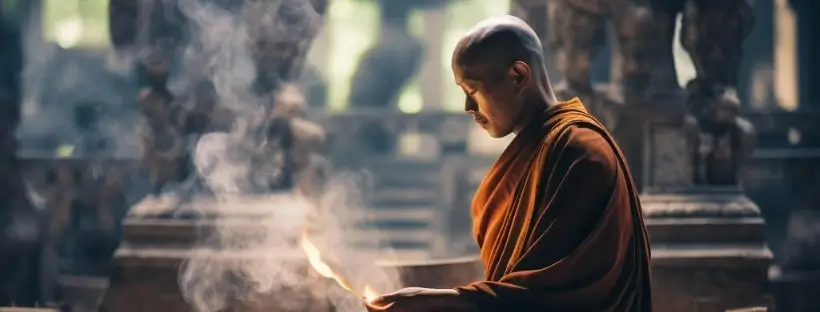
The genesis of meditation is rooted in practices that were both straightforward and profound, designed to foster inner serenity and a deep spiritual connection. Central to these early techniques was breath awareness, where focusing on one’s breathing could quiet the mind and usher in mental clarity. The chanting of sacred sounds or mantras was another pivotal method, utilized to transcend ordinary consciousness and tap into higher realms of awareness.
Employing visualizations and mental imagery also played a significant role; practitioners would envision tranquil scenes or symbols to induce specific states of mind. The importance of a stable and comfortable posture cannot be overstated, as it facilitated concentration and physical ease, essential for deeper meditative states.
Engagement with the natural world was another facet of ancient meditation, seeking harmony and unity within natural environments. Rituals and prayers, incorporating specific gestures or recitations, were integral for connecting with spiritual dimensions.
These foundational techniques have paved the way for the myriad of meditation practices we see today, each aiming to achieve inner peace and a deeper comprehension of oneself and the universe. Through these age-old methods, the timeless quest for knowledge and spiritual growth continues to thrive, illustrating meditation’s enduring significance across centuries.
Final Thoughts

Meditation’s journey from ancient rituals to modern practices underscores its timeless relevance and adaptability. It remains a beacon for those seeking inner peace and self-awareness in a fast-paced world. Its universal appeal and profound impact highlight our enduring search for connection and tranquility.
The practice serves as a bridge between the past and present, offering insights and techniques that are as beneficial today as they were millennia ago.
With each breath and moment of mindfulness, we honor the legacy of those who meditated before us, fostering a deeper understanding of ourselves and the world around us. Meditation not only enriches our personal lives but also contributes to a more compassionate and mindful society.

